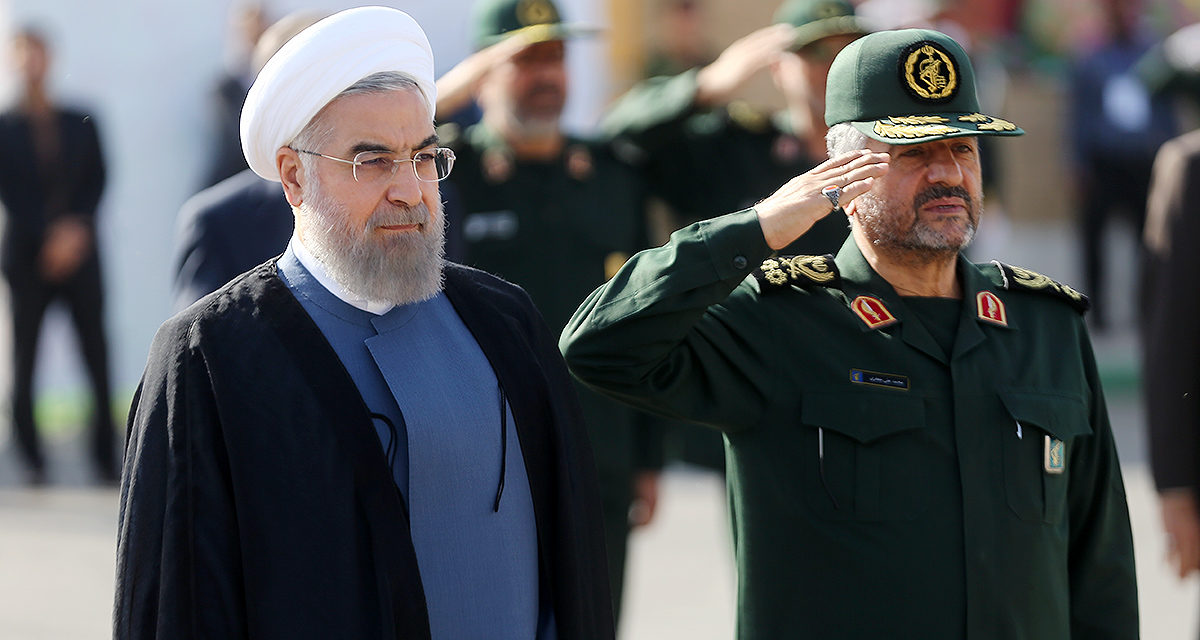UPDATE 1400: Iran Prosector General Mohammad Jafer Montazeri has issued another warning to unofficial currency dealers and speculators — blaming along with the “enemy” for the currency crisis — to change their behavior.
“Their action is helping the enemy and disrupting the society’s economic system and security,” Montazeri said on Wednesday.
On Tuesday, Tehran Police Chief Gen. Hossein Rahimi said 35 unofficial dealers have already been arrested.
UPDATE, 1230 GMT: Activist Zia Nabavi has been arrested again.
In a short phone call on Tuesday, Nabavi said he had been taken to Ward 209 of Evin Prison by security forces.
In 2007, Nabavi was permanently banned from university study for his political activities. He was arrested soon after the June 2009 mass protests over the disputed Presidential election and given a 15-year sentence and 74 lashes. The punishment was reduced on appeal to 10 years, and Nabavi was released from prison in April 2018.
In June 2009, Nabavi attended one of the “Green Revolution” protests,[1] which disputed the reelection of President Mahmoud Ahmadinejad over opposition candidates Mir-Hossein Mousavi and Mehdi Karroubi.[3] Shortly after, he was arrested at his home along with his cousin , Atefeh Nabavi.[4] He was initially charged with “gathering and colluding against national security”; “propaganda against the system”; “disturbing public order”; and “moharebeh” (enmity against God), as well as accused with being a member of the People’s Mojahedin Organization of Iran, a banned militant group. The charges were later reduced to “creating unease in the public mind”, and he was given a sentence of 15 years in prison and 74 lashes. In May 2010, a successful appeal reduced his sentence to ten years.[1]
UPDATE, 1200 GMT: MPs have given President Rouhani one month to appear before Parliament to answer questions on the Government’s approach to economic problems.
Rouhani canceled an interview on State TV last week, spurring some legislator to summon him.
The Government has blocked previous calls for the questioning of Rouhani. Vice President Hosseinali Amiri said on Wednesday that the latest attempt is “unconstitutional”.
The head of Iran’s Revolutionary Guards has warned President Hassan Rouhani to act over the currency crisis or face consequences.
In an open letter published in conservative outlets, Maj. Gen. Mohammad Ali Jafari wrote:
The unique and extensive backing you benefited from in past weeks shouldn’t preclude you from taking revolutionary actions to control prices and prevent the enormous increase in the price of foreign currency and gold.
Decision-making in today’s difficult circumstances necessitates revolutionary determination and decisiveness in dealing with certain managers’ weaknesses.
Pressure on Rouhani over Iran’s economic problems built to the point last month where hardliners threatened his removal. He salvaged his Presidency by taking a harder rhetorical line against the US, bringing the public endorsement of the Supreme Leader.
But crisis has been renewed by the sharp fall in the value of the Iranian rial, which lost about 35% of its value against the US dollar on Sunday and Monday.
The rial reached a historic low of about 45,000:1 vs. the US dollar in January. It has continued to sink throughout the year, but the 48-hour collapse dramatically took it from 85,000:1 to 119,000:1.
Officially, the Central Bank and others such as Speaker of Parliament Ali Larijani have blamed the “enemy”, an implicit reference to expanding US sanctions, rather than internal problems. However, about 200 MPs have sent Rouhani a letter demanding a further shake-up of his economic team.
Last week, the head of the Central Bank was replaced, but the legislators want the dismissal of the Economy and Industry Ministers.
Protests in Several Cities
Hundreds of protesters reportedly gathered in Karaj, Rasht, Isfahan, and Shiraz.
Demonstrators chanted about rising prices and unemployment. Some reports said slogans included “Incompetent officials, resign, resign”, “Death to the dictator”, “People beg while the Leader reigns”, and “No fear, no fear, we are all together here.”
Footage of a protest in Isfahan:
تجمع اعتراضی گروهی از کسبه و رانندگان در خیابان شاپور جدید در #اصفهان، امروز ۹ مرداد ۹۷
“در اعتراض به گرانی و بیکاری و وضعیت اقتصادی”
معترضان شعار میدهند: «مرگ بر گرانی، مرگ بر بیکاری، مرگ بر بیغیرت» pic.twitter.com/086X6uotYW— BBC NEWS فارسی (@bbcpersian) July 31, 2018
A Brief Recovery?
After its collapse, the rial recovered about 10% of its value on Tuesday, standing at 107,000:1 vs. the US dollar at the end of the day.
State media credited the Government promise of a new package to regulate the foreign exchange market.
Tehran Police Chief Gen. Hossein Rahimi said 35 people have been arrested for illegal currency trading: “They have been served the final warning to stop their fraudulent maneuvers on the market.”
Previous Government interventions have failed to halt the rial’s devaluation this year. These included a unified official rate of 42,000:1, discounted rates for importers of essential goods, and a switch to the Euro as the reporting currency, in addition to the arrests of unofficial currency dealers.
The bounce-back also may have been assisted by Donald Trump’s Monday declaration — quickly pulled back by US officials — that he would be willing to meet Iranian leaders without conditions, a contrast to his Administration’s pursuit of regime change.
The Rouhani Government rebuffed any approach by Trump without the US stepping back from its withdrawal from the 2015 nuclear agreement and its expansion of sanctions. Rouhani advisor Hamid Aboutalebi tweeted that there must be “respect for the great Iranian nation, an end of hostilities, and America’s return to the nuclear deal”.
Jafari said on Tuesday, “Mr Trump! Iran is not North Korea to accept your offer for a meeting. Even US Presidents after you will not see that day.”
And another Rouhani advisor, Hesamoddin Ashna, tweeted on Wednesday to Trump, “You launched an economic war against us by imposing sanctions. First stop this war and then ask for talks. Without preconditions means without sanctions.”
Claimed footage of demonstrators in Gohardasht near Tehran — “Rising prices and inflation torment the people….They lie when blaming America, the enemy is right here”:

